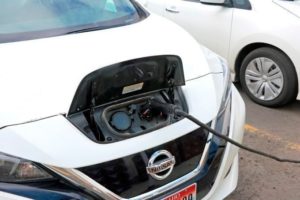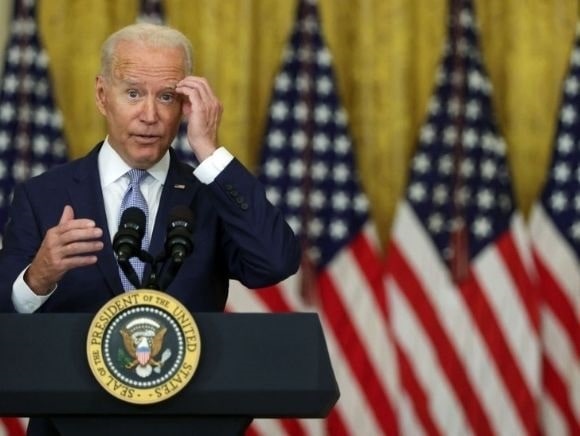Last week, President Biden announced a push for 50% of new vehicles to be electric by 2030. The three biggest automakers, Ford, General Motors, and Stellantis, which owns Fiat-Chrysler, pledged to follow the president’s request and joined him for the signing on August 5. The symbolic but nonbinding order sets expectations for manufacturers as part of the president’s climate change strategy – but is his goal even possible?
Demand and Affordability

(Photo by: Don and Melinda Crawford/UCG/Universal Images Group via Getty Images)
To achieve Biden’s desired results, not only does production need to increase, but so does the demand for electric vehicles (EV). Only 2% of the new cars sold in 2020 were EVs, and nearly half went to California. What environmental good can be accomplished by producing 25 times more electric vehicles than there are people to buy them?
As of now, most EVs cost more than $50,000. There are a decent number of cheaper options, including the Tesla Model 3, starting at about $39,000. The most affordable is the Nissan Leaf at $27,500. However, the range is just 149 miles per charge, and the car seats only four people comfortably. To drive demand, different options in multiple price ranges must be offered to consumers.
Expert Predictions
Experts expect sales to fall far below the Biden administration’s hopes. LMC Automotive projects 24% of private vehicles will be electric by 2030 while HIS Markit estimates 32%. Wells Fargo forecasts a mere 16%. Defending her company’s estimations, Stephanie Brinley, a principal analyst at HIS Markit, said getting consumers on board is a major obstacle and “it could be more difficult than expected.”
Jeff Schuster, president of global forecasting at LMC Automotive, said getting from point A to point B “without having some kind of anxiety – not just range anxiety – but if you can’t charge at a station because it didn’t work or you had to wait two hours” is a serious issue for potential customers.
Infrastructure Pressure
Congress’ bipartisan infrastructure bill would allocate $7.5 billion to strengthening the country’s electric vehicle charging station network. According to experts, 29% of the United States’ greenhouse gas emissions come from transportation; half of that is from passenger cars. A part of Biden’s climate change agenda is limiting such emissions by pushing EVs. However, to limit emissions and successfully replace gas cars with electric alternatives, EV infrastructure improvement is necessary. This is a driving factor in passing the bill and securing funding for accessible charging stations.
Democrats are using the president’s EV goals and climate change agenda as a reason to include the per-mile tax pilot program in the infrastructure bill. If the bill becomes law with the current language, volunteers will opt-in to have their driving data tracked by the federal government. If this program were to exit the pilot stage and become a nationwide mandate, U.S. motorists would cough up a per-mile fee each year in addition to all other fees and taxes they already pay.
Democrats hope this program and the potential fee are enough to drive demand for electric vehicles, increase sales, and lower greenhouse gas emissions. Their logic may be a little fuzzy, though.
Charging Accessibility
Gas stations are everywhere in urban areas – charging stations are not. According to Mike Nicholas, a senior researcher at the International Council on Clean transportation, to meet President Biden’s EV goals, the nation will need 2.4 million public and workplace chargers by 2030.
 According to Nicholas, $7.5 million will only provide 250,000 fast chargers, and though the private industry might build additional stations, it would not be nearly enough. Most electric cars will likely be plugged in at home in the beginning – but this is significantly slower. Some vehicles take 24 hours to hit half full but can charge more overnight with more expensive, efficient chargers. Owners won’t have to pay at private or public stations, but they will certainly see their home energy bills go up. Single-family homes with garages and driveways will have the ability to use at-home charging, plugging in when they arrive home from work, and charging overnight.
According to Nicholas, $7.5 million will only provide 250,000 fast chargers, and though the private industry might build additional stations, it would not be nearly enough. Most electric cars will likely be plugged in at home in the beginning – but this is significantly slower. Some vehicles take 24 hours to hit half full but can charge more overnight with more expensive, efficient chargers. Owners won’t have to pay at private or public stations, but they will certainly see their home energy bills go up. Single-family homes with garages and driveways will have the ability to use at-home charging, plugging in when they arrive home from work, and charging overnight.
However, the concerns over public charging stations will be significant for all EV owners. The most popular vehicles have about a 250-mile range. Taking a long-distance trip of 300 miles or more can be complicated and stressful with no facilities along the route.
Apartment residents and on-street parkers will struggle to own electric vehicles. Chargers in malls and workplaces are most popular for these owners, but more creative and numerous options are necessary if half of all new cars are to be electric. Cities may need to establish a reservation program for charging spots or locally invest in creating public stations or even incentivize private companies to develop and implement creative charging locations and methods. Is it possible to hit Biden’s goal by 2030? Maybe – but it will take a lot more work than he and his environmentally friendly palls can comprehend.
~
Read more from Keelin Ferris.




